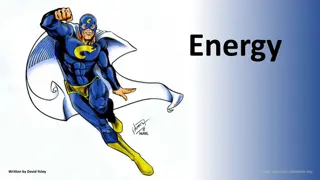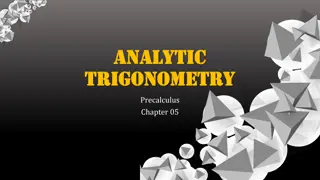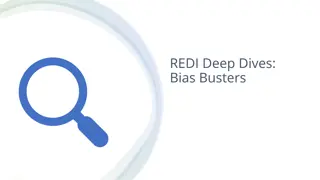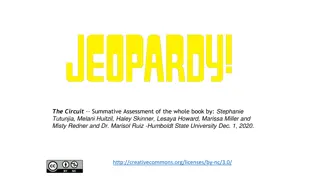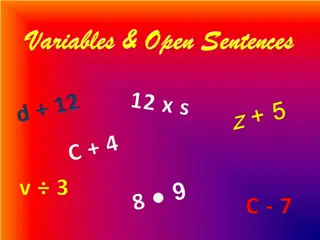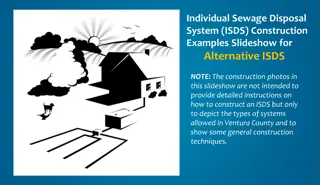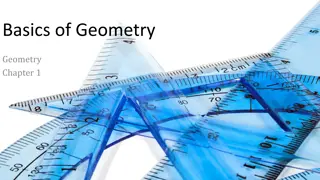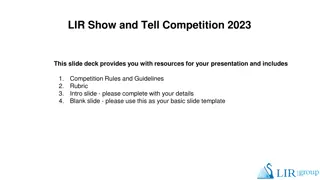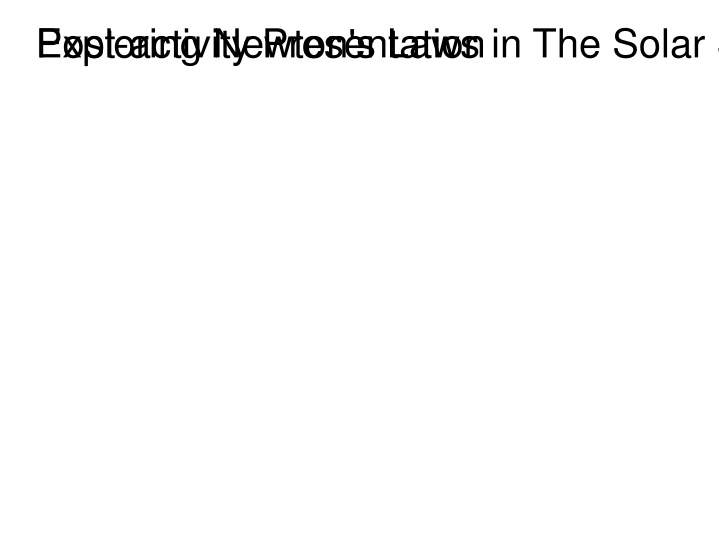
Exploring Newton's Laws in the Solar System
Discover how Newton's Laws apply to the movements of celestial bodies in our Solar System, from the orbits of planets to the interactions between the Sun, Earth, and Moon. Explore concepts such as gravitational forces and acceleration to understand the dynamics of space.
Download Presentation

Please find below an Image/Link to download the presentation.
The content on the website is provided AS IS for your information and personal use only. It may not be sold, licensed, or shared on other websites without obtaining consent from the author. If you encounter any issues during the download, it is possible that the publisher has removed the file from their server.
You are allowed to download the files provided on this website for personal or commercial use, subject to the condition that they are used lawfully. All files are the property of their respective owners.
The content on the website is provided AS IS for your information and personal use only. It may not be sold, licensed, or shared on other websites without obtaining consent from the author.
E N D
Presentation Transcript
Post-activity Presentation Exploring Newton's Laws in The Solar System
The Sun is the largest object in the Solar System The much smaller Earth orbits the Sun The Sun and Earth attract one another with a gravitational force The Sun and The Earth
The Earth is much larger than the Moon The Moon orbits the Earth The Moon and Earth attract one another with a gravitational force The Earth and The Moon
Why don't the planets travel in straight lines at constant velocity? a) They do b) There is a net force acting on them c) There is no net force acting on them d) The forces are equal and opposite QUESTION 1
Newton's First Law If there is no net force on an object, it will move in a straight line at constant velocity There are gravitational forces between the Sun, Earth, and Moon, so they do
Force = mass x acceleration (F=ma) Rearranged, a=F/m There are gravitational forces on the planets, therefore they accelerate (change direction all the time in their orbits) Newton's Second Law
An object with a mass of 2 kg is accelerating at a rate of 4 x 105 m/s2. What net force is acting on it? a) 8 x 105 N b) 2 x 105 N c) 4 x 105 N d) 0.5 N QUESTION 2
Newton's Third Law For every action force, there is an equal and opposite reaction force Example: When the Sun pulls on the Earth, the Earth pulls back on the Sun with the same force
If the Earth pulls back on the Sun with the same force that the Sun pulls on the Earth with, why doesn't the Sun orbit the Ea a) The Sun does orbit the Earth b) The Sun is much more massive than the Earth c) The Sun is fixed in position and cannot move d) The forces are not equal QUESTION 3


